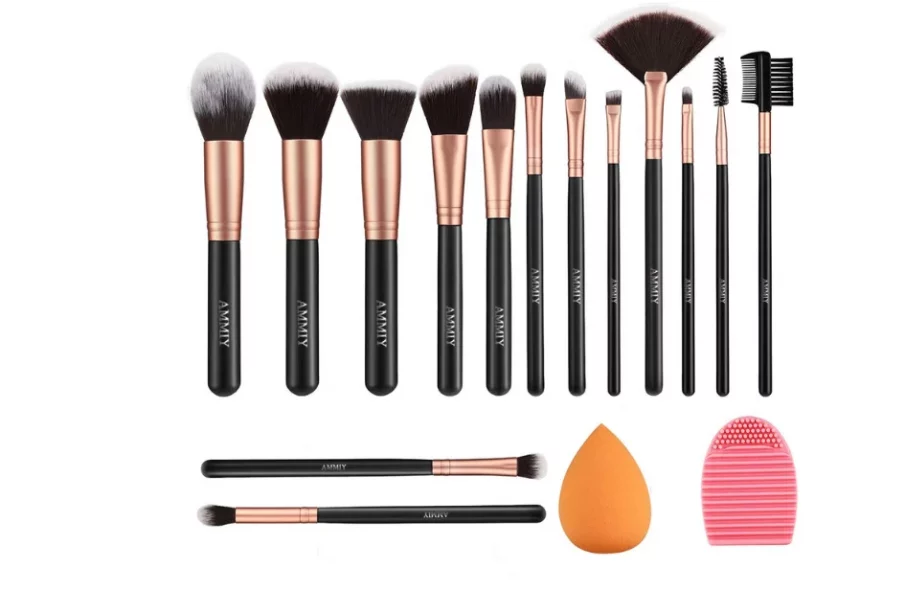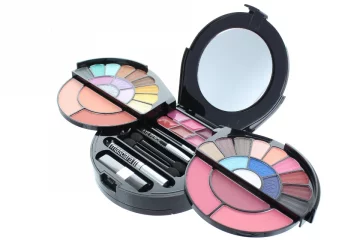
Makeup Brushes | Bebevy
Makeup brushes are indispensable tools in every beauty enthusiast’s arsenal. Whether you are a professional makeup artist or an everyday makeup lover, understanding the significance of makeup brushes is crucial for achieving flawless makeup application. From foundation to eyeshadow, each brush serves a specific purpose, contributing to the overall finish and precision of your makeup look.
Importance of Makeup Brushes
The importance of makeup brushes cannot be overstated. They are designed to pick up and distribute makeup products evenly on the skin, ensuring seamless blending and maximum coverage. Unlike fingers or sponges, makeup brushes offer more control and precision, allowing you to achieve professional-level results at home. Using the right brushes not only enhances the application process but also extends the longevity of your makeup products.
Types of Makeup Brushes
- Foundation Brushes: Foundation brushes come in various shapes and sizes, each tailored for different formulas and coverage levels. Flat foundation brushes are ideal for liquid and cream foundations, providing a smooth and streak-free application. On the other hand, buffing brushes with dense bristles are perfect for blending liquid or powder foundations seamlessly into the skin.
- Concealer Brushes: Concealer brushes are typically small and tapered, designed to precisely apply and blend concealer under the eyes or over blemishes. Their compact size allows for targeted application, ensuring flawless coverage without cakiness.
- Powder Brushes: Powder brushes are large, fluffy brushes used to apply setting powder or powder foundation. They distribute powder evenly across the face, setting makeup in place and creating a matte finish. Powder brushes can also be used for bronzer or blush application, depending on their size and shape.
- Blush Brushes: Blush brushes are usually medium-sized with soft, fluffy bristles. They are designed to pick up just the right amount of blush and blend it seamlessly onto the cheeks for a natural flush of color. Angled blush brushes are particularly useful for contouring and defining the cheekbones.
- Eyeshadow Brushes: Eyeshadow brushes come in various shapes and sizes to cater to different eye shapes and makeup techniques. Flat shader brushes are ideal for applying eyeshadow to the lid, while blending brushes help soften harsh lines and blend multiple shades together. Detail brushes are perfect for precise application in the crease or along the lower lash line.
- Eyeliner Brushes: Eyeliner brushes are thin and angled, allowing for precise application of gel or cream eyeliner along the lash line. They offer more control than traditional eyeliner pencils, enabling you to create sharp lines or smudged effects with ease.
- Lip Brushes: Lip brushes have fine, tapered tips designed for precise application of lipstick or lip gloss. They allow for controlled application, helping to define the lips’ edges and ensuring an even distribution of color.
Choosing the Right Makeup Brushes
When choosing makeup brushes, consider the following factors:
- Bristle Material: Natural bristles are typically made from animal hair and are ideal for powder products, while synthetic bristles are better suited for liquid and cream formulas.
- Brush Shape: The shape of the brush head determines its function. For example, flat brushes are great for packing on color, while fluffy brushes are perfect for blending.
- Handle Length: Longer handles provide better control, especially for detailed work, while shorter handles are more convenient for travel.
- Quality: Investing in high-quality brushes ensures durability and optimal performance. Quality brushes also help prevent shedding and maintain their shape after repeated use.
Caring for Your Makeup Brushes
Proper maintenance is essential to prolong the lifespan of your makeup brushes:
- Regular Cleaning: Clean your brushes regularly with a gentle brush cleanser or mild soap to remove makeup residue and bacteria.
- Drying: Always dry your brushes flat or upside down to prevent water from seeping into the ferrule (the metal part holding the bristles), which can loosen the glue and cause shedding.
- Storage: Store your brushes in a clean, dry place to keep them protected and maintain their shape. Consider using brush guards or containers to organize and store your brushes effectively.
Conclusion
Makeup brushes are not just tools; they are essential instruments that empower you to create stunning makeup looks with precision and ease. By understanding the different types of brushes available and how to use and care for them properly, you can elevate your makeup application to the next level. Whether you are a beginner or a seasoned makeup artist, investing in quality makeup brushes is a worthwhile decision that enhances both your makeup routine and the final result. Discover the transformative power of makeup brushes and unleash your creativity in the world of beauty.
Welcome to BeBevy, your ultimate destination for comprehensive and reliable product comparisons. We understand the importance of making informed decisions when it comes to purchasing products, which is why we’ve created a platform that simplifies the process and provides you with all the necessary information.







